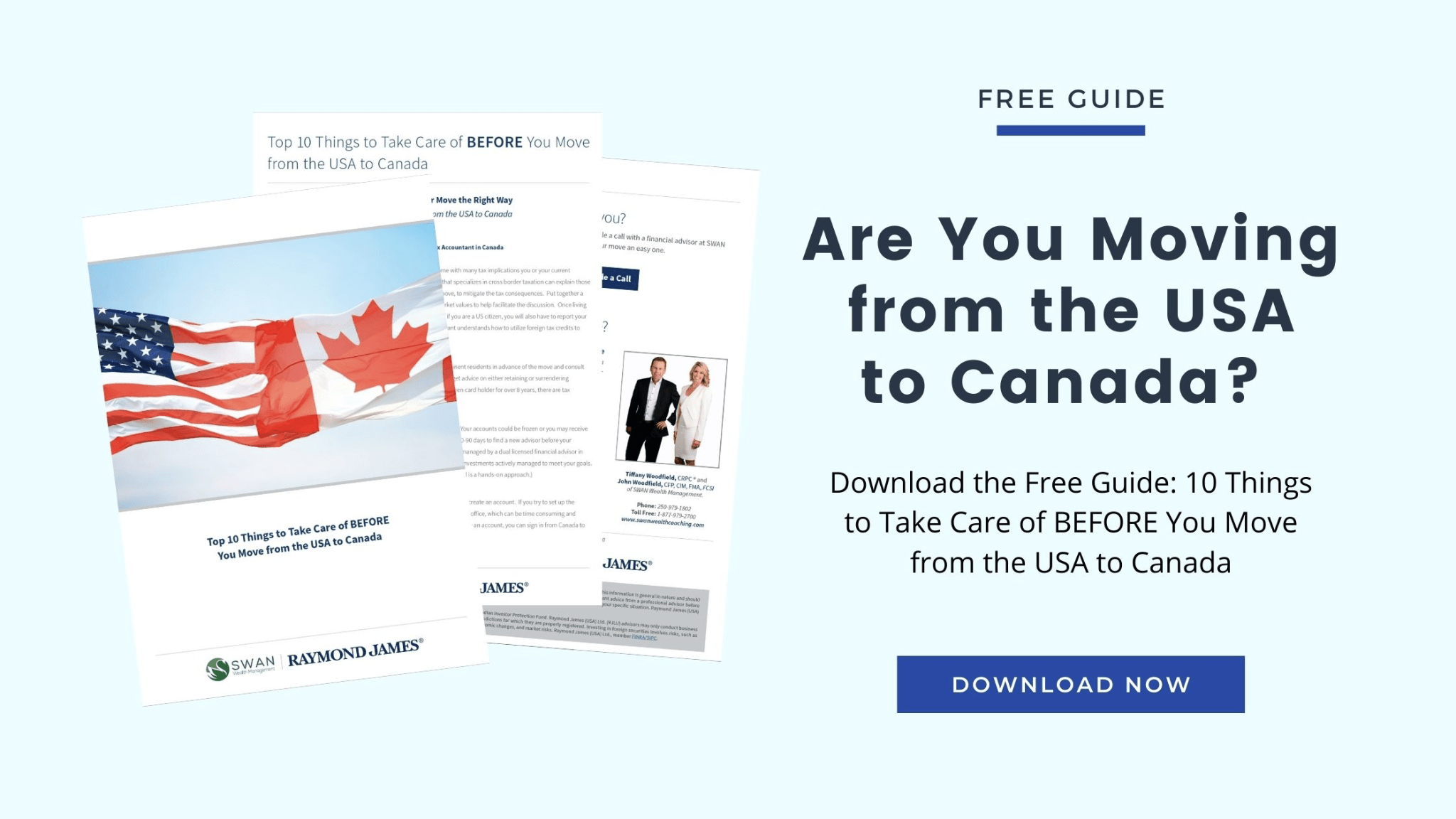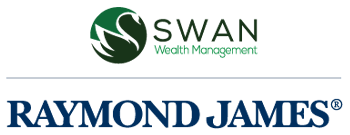IRA to Roth IRA Conversion
Written by Tiffany Woodfield, Portfolio Manager, CIM®, CRPC®
Reading Time: 6 minutes 20 seconds.
When you do an IRA to Roth IRA Conversion, also known as a Backdoor Roth, you create a taxable event in the year you do the conversion. It is essential to plan for this. Only move forward with converting an IRA to a Roth IRA after speaking to your accountant.
Usually, people plan to do this conversion if they are in a lower-income year or if they know they will be in a higher taxation year in the future. If you are moving to Canada, where you usually pay higher income tax rates than what you pay in the US, a Roth IRA Conversion may work for you.
This information is general in nature and you should speak to your cross-border advisor and cross-border accountant.
TABLE OF CONTENTS
- Can You Still Convert a Traditional IRA to a Roth in 2021?
- Benefits of an IRA to Roth Conversion
- Roth IRA Conversion Rules
- How to Convert an IRA to a Roth IRA
- Tax Implications of a Roth IRA Conversion
- Example of a Roth IRA Conversion
- If You're Moving to Canada You Might Consider a Roth IRA Conversion—Here's Why
- Is there a Penalty for Converting an IRA to a Roth IRA?
Can You Still Convert a Traditional IRA to a Roth in 2021?
You can still convert a Traditional IRA to a Roth IRA in 2021 as long as you haven't already done a conversion this year. If you plan to contribute to your 2021 Roth IRA, you can do so until April 15, 2022. Keep in mind that a contribution is different from a conversion.
A conversion does not have a deadline or dollar limit. However, you can only do one conversion per year.
Benefits of an IRA to Roth Conversion
If you are a high-income earner, you may not qualify to open a Roth IRA. Therefore, you do not have the benefit of an account with tax-free growth and no future tax liability. One option is to convert an IRA to a Roth IRA, creating a backdoor Roth IRA.
Why you may want to consider a Roth IRA conversion:
- You think you will be in a higher tax bracket in the future.
- You don't want to be forced to take RMDs (Required Minimum Distributions) when you aren't ready to take them.
- You are expecting to earn more money in the future and to pay more tax.
- You want to diversify your retirement savings by having taxable accounts (ex: IRA) and an after-tax account such as a Roth IRA.
Roth IRA Conversion Rules
To do a Roth IRA conversion, you need to do proper planning with your accountant, and you need to follow specific rules.
Roth IRA Conversion Rules include the following:
- You can contribute money from an existing IRA and roll it over to a Roth IRA.
- You aren't limited by the annual contribution limit and can roll over as much as you want. You can convert the entire amount or only a portion of your IRA. Whatever you convert is treated as income on your tax return. You are converting pre-tax dollars to post-tax dollars so you can pay tax at a lower rate now compared to the future. Again, you need to first have a strategic conversation with your accountant.
- You can only do one Roth IRA conversion in a year.
- You can also convert a 401(k) to a Roth IRA. Often you would need to be separated from your employer to do this. On occasion, an employer may offer an in-service rollover, but usually, you need to be at least age 59.5 to have this option.
How to Convert an IRA to a Roth IRA
After you have funded a traditional IRA, either from a 401(k) rollover or direct contributions, you then need to decide on the timing of your Roth conversion. You also need to understand how much tax you will have to pay and how much you want to convert.
It would be best to consult with an accountant to run scenarios and crunch the numbers before you do the conversion, so you can prepare for the taxes you will owe. Once you do the conversion, there is no converting back; it is permanent.
If you already have a Roth IRA open, you can fund it or open one during the rollover. The easiest way to do this is a direct rollover from one financial institution to another called a trustee-to-trustee rollover; if it is with the same brokerage firm, it is called a same trustee transfer.
If you do an indirect rollover, you will receive a distribution from your traditional IRA. And you will have 60 days to deposit it into your Roth IRA.
An indirect rollover is when you receive a check payable to yourself, as the account owner, and you then have to take this check and within 60 days deposit it to the receiving institution.
Tax Implications of a Roth IRA Conversion
When you do a Roth IRA conversion, you pay tax on your current year's tax bill. You move money from a pre-tax retirement account such as an IRA to a post-tax retirement account such as a Roth IRA. This tax can be substantial, and you have to understand that there is no guarantee you may not be in a lower tax bracket in the future.
It is also essential to understand that you could be moved into a higher tax bracket when adding the conversion amount to your current year's income. Finally, you need to know that once you do the conversion, there is no turning back; you are stuck with the conversion and tax bill.
It's critical that you work with an accountant when making these decisions.
Example of a Roth IRA Conversion
Jennifer worked for years in IT at a software company in California.
When she left her employer, she did a direct rollover and moved her 401(k) into a traditional IRA as she wanted more flexible investment options. But a few years later, she decided she wanted to retire and move back to Canada, where she had grown up.
She had never been eligible to contribute to a Roth IRA because she earned too much. But she knew Canada has a higher tax regime, and she wanted to learn how to create a backdoor Roth. She met with her accountant to discuss the tax implications and to have her accountant crunch the numbers.
After much consideration, she decided she wanted to do the conversion of part of her IRA. She knew the amount of taxes she would pay and was comfortable moving forward.
So she opened a Roth IRA with her brokerage firm and did a direct transfer from her IRA to her Roth IRA. This was all under the guidance of her accountant. The amount of the conversion was $300,000, which was added to her current tax return. She understood she had to pay a large tax bill. In her case, she decided it was worth it because she had created tax diversification in retirement.
The things she considered were:
- She met with her accountant and ran the numbers on how much to convert. Her accountant calculated the taxes that would be owing.
- She had the cash on hand to pay the substantial tax liability in the current year to the IRS.
- She did the conversion while she was a US resident and not a permanent resident of Canada. If she had done it as a resident of Canada, she would have had to report the income in Canada as well.
- She did a direct transfer, so it was easy.
Once she was in Canada, she was comfortable. She still had money in her IRA, from which she would have to start taking distributions at age 72. She had a Roth IRA, which would grow tax-free for years. And she could have tax-free withdrawals as long as she followed the US rules regarding qualified distributions.
For a withdrawal from a Roth IRA to be a qualified distribution, you must have held it for at least five years and be over age 59.5. Once living in Canada, you cannot make contributions to a Roth IRA, and you must do a one-time treaty election.
To learn more about having your Roth IRA in Canada, read this comprehensive article: Roth IRA Canada.
If You're Moving to Canada You Might Consider a Roth IRA Conversion—Here's Why
You may consider doing a Roth IRA conversion when you move to Canada because Canada has higher taxes than the US. By bringing over a Roth IRA, you can relax knowing your earnings will grow tax-free, and the withdrawals in retirement will be tax-free if you follow the rules correctly and take a qualified distribution.
Also, you will not be required to take minimum distributions when you may not be ready to take them. Moreover, you will have created diversification with your retirement accounts. For example, if you have savings in an IRA, that is a future tax liability. But savings in a Roth IRA represent no future tax liability.*
*Your withdrawals will be tax-free if they are considered a qualified distribution. To be a qualified distribution, you must have held the account for over five years and be 59.5 or older in the US. For a Roth IRA to be treated by the CRA (Canada Revenue Agency) like it is in the US, you need to follow the above rules for a qualified distribution; you need to file the one-time treaty election, and never contribute once you are a Canadian resident.
Is there a Penalty for Converting an IRA to a Roth IRA?
The 10% early distribution penalty that applies if you take funds out of your IRA before you are 59.5 does not apply to a Roth IRA. When you convert funds directly from an IRA to a Roth IRA (even if you are under the 59.5), you will not be subject to this penalty. Unless, of course, you consider the taxes owing in the current year to be a penalty.
Key Takeaways:
- There are many benefits to a Roth conversion or a backdoor Roth.
- There are significant tax implications when you do a Roth conversion, so make sure you speak with your accountant and crunch the numbers.
- You may consider doing a Roth conversion if you are moving to Canada.
- There is no early distribution penalty when you do an IRA to Roth Conversion.
Next Steps
If you’re planning your retirement and a cross-border move, please get in touch. At SWAN Wealth, we specialize in cross-border financial planning and wealth management.
More Cross-Border Financial Planning Articles & Guides
These articles and guides will help you simplify your move and make sure you’ve got everything covered.
Cross-Border Estate Planning Guide
Roth IRA Canada: How to Manage Your Investments Across the Border
The Ultimate Financial Planning Resource for Dual Citizens or Green Card Holders Living in Canada
401k in Canada - How to Stay Onside with the IRS and Avoid a Large Tax Bill
Retiring to Canada - A Financial Planning Guide
Financial and Tax Planning for US Citizens Living in Canada
Canadian RRSP Facts for Dual Citizens, Expats and Canadians

About the Author
Tiffany Woodfield is a Portfolio Manager, and the co-founder of SWAN Wealth Management, along with her husband, John Woodfield. Tiffany specializes in advising clients who live both in Canada and the United States and need to simplify their cross-border financial plan, move their assets across the border, and optimize their investments so they can minimize their tax burden. Together Tiffany and John Woodfield help their clients simplify their cross-border finances and create long-term revenue streams that will keep their assets safe whether they live in Canada or the US.
Schedule a Call
Book a 15-minute introductory call with SWAN Wealth Management. Click here to schedule a call.
Information in this article is from sources believed to be reliable, however, we cannot represent that it is accurate or complete. It is provided as a general source of information and should not be considered personal investment advice or solicitation to buy or sell securities. The views are those of the author, SWAN Wealth Management, and not necessarily those of Raymond James Ltd. Investors considering any investment should consult with their Investment Advisor to ensure that it is suitable for the investor’s circumstances and risk tolerance before making any investment decision. Raymond James Ltd. is a Member - Canadian Investor Protection Fund. Raymond James (USA) Ltd., member FINRA/SIPC. Raymond James (USA) Ltd. (RJLU) advisors may only conduct business with residents of the states and/or jurisdictions for which they are properly registered.




